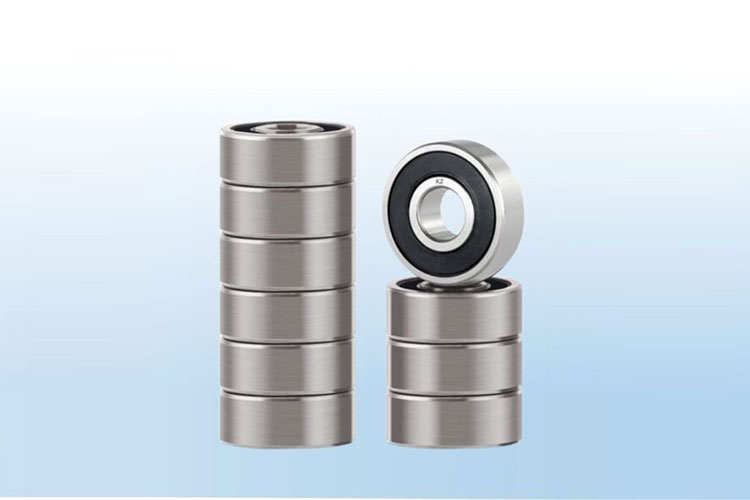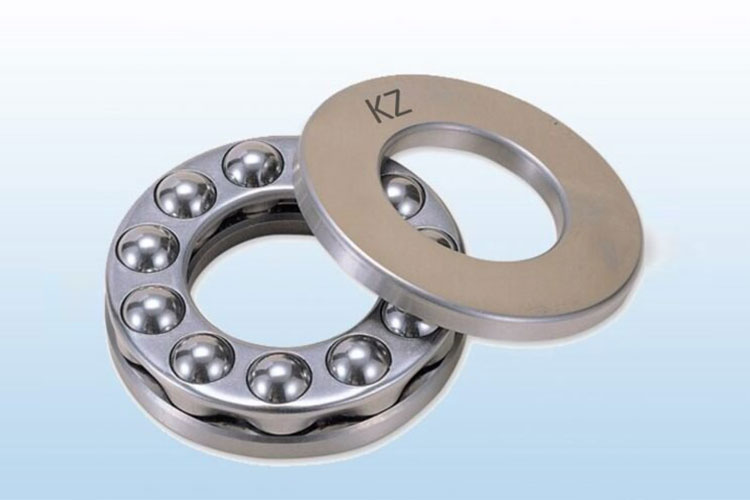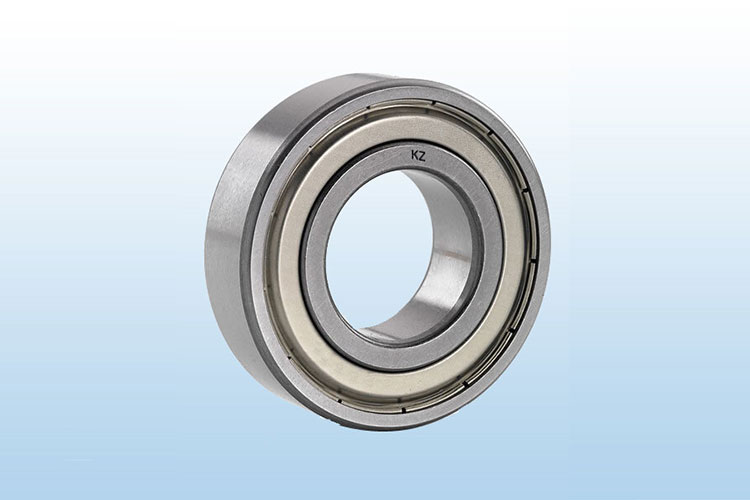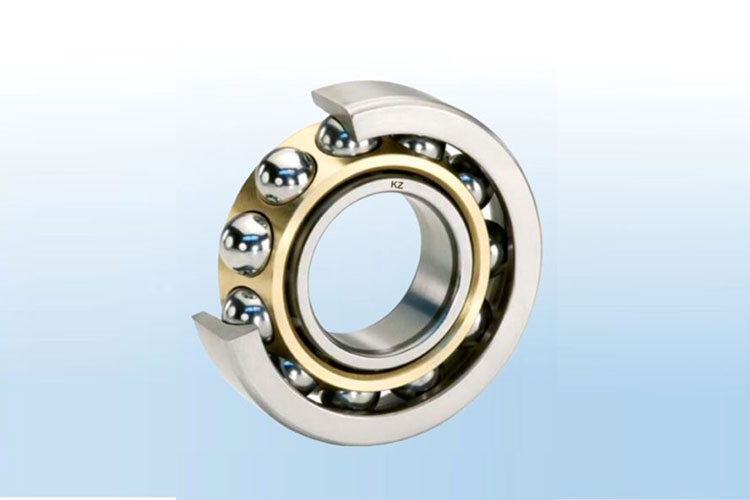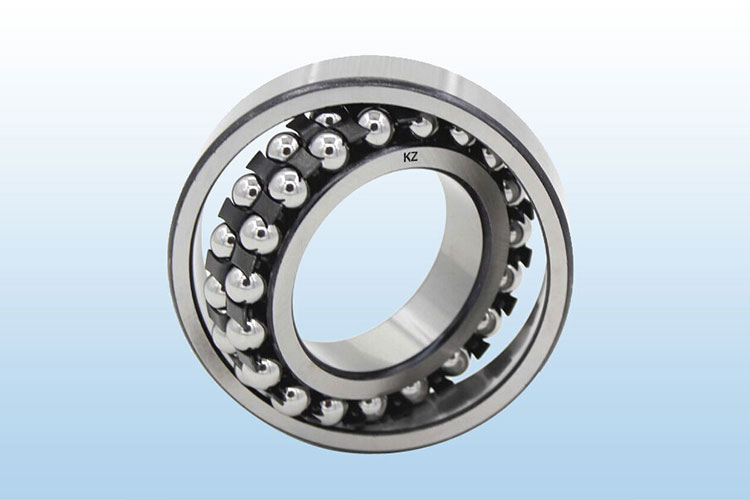Miniature Ball Bearing
Miniature Ball bearings are sometimes referred to as instrument bearings or micro bearings which are very small machined components that include an outer ring, inner ring, balls, retainers, shields and snap rings. Miniature ball bearings are available in inch and metric sizes, open or shielded and flanged or without flange. Miniature ball bearings are useful in a wide variety of applications.
Thrust Ball Bearing
Thrust ball bearing is composed of bearing balls supported in a ring, can be used in low thrust applications where there is little axial load. Thrust ball bearings are designed to accommodate axial/ thrust loads in one direction or double direction. They are available in ISO metric and inch series. Thrust ball bearings consist of two hardened and ground thrust plates with matching ball grooves on one side and a 1-piece brass cage that contains the precision balls. In some low-speed applications, a full complement of balls is used without the cage to increase thrust capacity. Thrust Ball Bearings are not suitable for high-speed applications. At high speeds, sliding movement between balls and raceways can occur, which may result in smearing.
Deep Groove Ball Bearing
Deep groove ball bearings are among the most widely used type of bearings in the world. They can operate at high speeds and can carry radial and (limited) axial loads. They are commonly used in electric motors, compressors, fans, and conveyors. Deep groove ball bearings are of two types as shown below:
Angular Contact Ball Bearing
Angular contact ball bearings can accommodate axial loads in one direction only. Their bearing rings are relatively offset as such to have an upper and a lower shoulder and are non-separable with single raceway grooves in the inner and outer rings. Angular Contact Ball Bearings are known for their performance and high accuracy. This type of bearings can carry a high axial and radial load. Angular Contact ball bearings have raceways in the inner and outer rings that are displaced with respect to each other with the angle of contact ranges from 15° to 45° in the direction of the bearing axis. They are particularly suitable for bearing arrangements where rigid axial guidance is required. These bearings are available in a wide range of shielding and seals. They are of the following types :
Self Aligning Ball Bearings
Self aligning ball bearings have two rows of balls, a common sphered raceway in the outer ring and two deep uninterrupted raceway grooves in the inner ring. Self aligning ball bearings are insensitive to angular misalignment of the shaft relative to the housing, which can be caused, for example, by shaft deflection or housing deformations. Self aligning ball bearings are suitable for applications where the shaft relative to the housing bore is prone to angular misalignments. Under normal loads, depending on the dimensional series, the maximum permissible angular misalignment is approximately 2° to 4°. These bearings are available in open and sealed versions and inner rings with a cylindrical or tapered bore.
Miniature Ball Bearing
Miniature Ball bearings are sometimes referred to as instrument bearings or micro bearings which are very small machined components that include an outer ring, inner ring, balls, retainers, shields and snap rings. Miniature ball bearings are available in inch and metric sizes, open or shielded and flanged or without flange. Miniature ball bearings are useful in a wide variety of applications.
Thrust Ball Bearing
Thrust ball bearing is composed of bearing balls supported in a ring, can be used in low thrust applications where there is little axial load. Thrust ball bearings are designed to accommodate axial/ thrust loads in one direction or double direction. They are available in ISO metric and inch series. Thrust ball bearings consist of two hardened and ground thrust plates with matching ball grooves on one side and a 1-piece brass cage that contains the precision balls. In some low-speed applications, a full complement of balls is used without the cage to increase thrust capacity. Thrust Ball Bearings are not suitable for high-speed applications. At high speeds, sliding movement between balls and raceways can occur, which may result in smearing.
Deep Groove Ball Bearing
Deep groove ball bearings are among the most widely used type of bearings in the world. They can operate at high speeds and can carry radial and (limited) axial loads. They are commonly used in electric motors, compressors, fans, and conveyors. Deep groove ball bearings are of two types as shown below:
Angular Contact Ball Bearing
Angular contact ball bearings can accommodate axial loads in one direction only. Their bearing rings are relatively offset as such to have an upper and a lower shoulder and are non-separable with single raceway grooves in the inner and outer rings. Angular Contact Ball Bearings are known for their performance and high accuracy. This type of bearings can carry a high axial and radial load. Angular Contact ball bearings have raceways in the inner and outer rings that are displaced with respect to each other with the angle of contact ranges from 15° to 45° in the direction of the bearing axis. They are particularly suitable for bearing arrangements where rigid axial guidance is required. These bearings are available in a wide range of shielding and seals. They are of the following types :
Self Aligning Ball Bearings
Self aligning ball bearings have two rows of balls, a common sphered raceway in the outer ring and two deep uninterrupted raceway grooves in the inner ring. Self aligning ball bearings are insensitive to angular misalignment of the shaft relative to the housing, which can be caused, for example, by shaft deflection or housing deformations. Self aligning ball bearings are suitable for applications where the shaft relative to the housing bore is prone to angular misalignments. Under normal loads, depending on the dimensional series, the maximum permissible angular misalignment is approximately 2° to 4°. These bearings are available in open and sealed versions and inner rings with a cylindrical or tapered bore.

